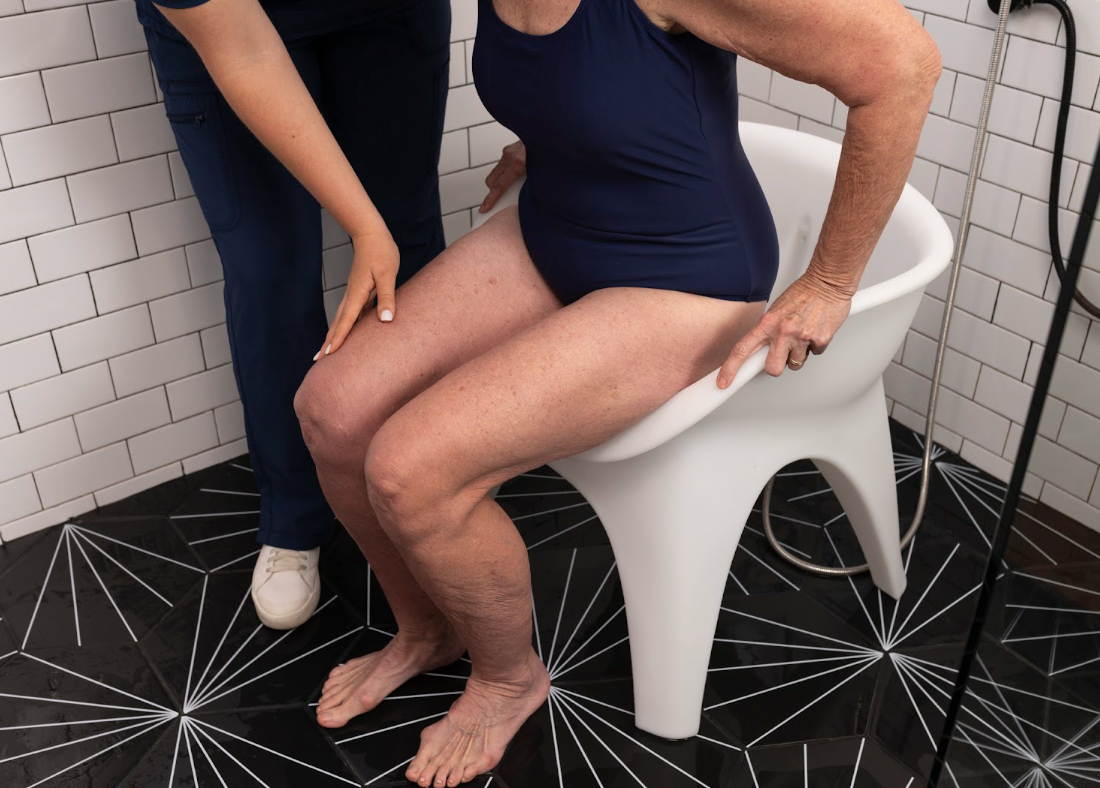Empowering Caregivers: A Guide to Fall Prevention & Perineal Care

Empowering Caregivers
Fall Prevention and Perineal Care
What do these 2 things have in common?
A LOT.
- 235,000 ER visits annually for falls
- 80% of the falls occur in the bathroom
- Millions of falls annually not requiring medical intervention but still injuring patients & caregivers
What you’ll need for fall prevention & exceptional perineal care:
The SoSoak shower soaking chair, a raised toilet seat, a walker, for in front of the toilet, and a wheelchair if the patient already uses one.
- First, acquaint the patient with the chair in their room and have them sit in it, so they can see how sturdy it is before they get in the shower. Also, show them the basin and explain it’s like a tub on legs.
- Establish an am and pm toileting time/routine. The chair, raised toilet seat and walker in the bathroom will be reminders they can complete their daily hygiene quickly and easily.
- Have non- slip mats both inside and outside of the shower. Grab bars are also incredibly helpful for caregivers and patients alike. Having quiet music playing in the background can also be incredibly helpful. Play music that is familiar to the patient which will add to the pleasantness of the routine you’re establishing.
- When ready to soak, assist the patient out of their clothing and into a robe. Assist the patient to BR and ask if they need to use the toilet first. Remove their robe and give the patient the walker and have them pivot to sit on the raised toilet seat, using the walker in front of the toilet for stability while they’re sitting. Or do a pivot transfer directly from wheelchair to toilet using a transfer belt, if necessary. While your patient is on the toilet, add a mild soap to Sosoak’s basin and turn on the faucet, using the hose without the spray to fill the basin ( Method 2 ). If they sit on the toilet for longer than 15 minutes , be sure to do a circulation check before they stand ( for example ‘pins and needles’), if compromised, massage their legs a bit then slowly assist them, using the walker, to a standing position.
- Have the shower soaking chair in the shower facing the patient and assist them in a pivot transfer into the chair, assuring them again the chair is designed not to tip. If the patient needs a wheelchair, assist in a pivot transfer using a transfer belt, if necessary.
- The caregiver then easily turns the chair to position the patient either facing the faucets or away. Let the patient sit, soak and relax for 10-20 minutes, with the patient or caregiver lifting the plug to refresh basin water whenever desired.
Start slowly then aim for 10 minute soaks 3 times a day or after each bowel movement. Make sure to pat dry, not rub, sensitive skin. It is easy to establish this routine, especially if you leave the chair hooked up in the shower.
A little tip: A 10-20 minute soak in the chair at bedtime gives them the mental health benefits of a full soak, resulting in a longer, better quality sleep.
Once this routine is established, daily hygiene will become a pleasant experience for both of you, and the struggles often surrounding bathing and toileting will become a thing of the past.
Happy Soaking!
0 comments

